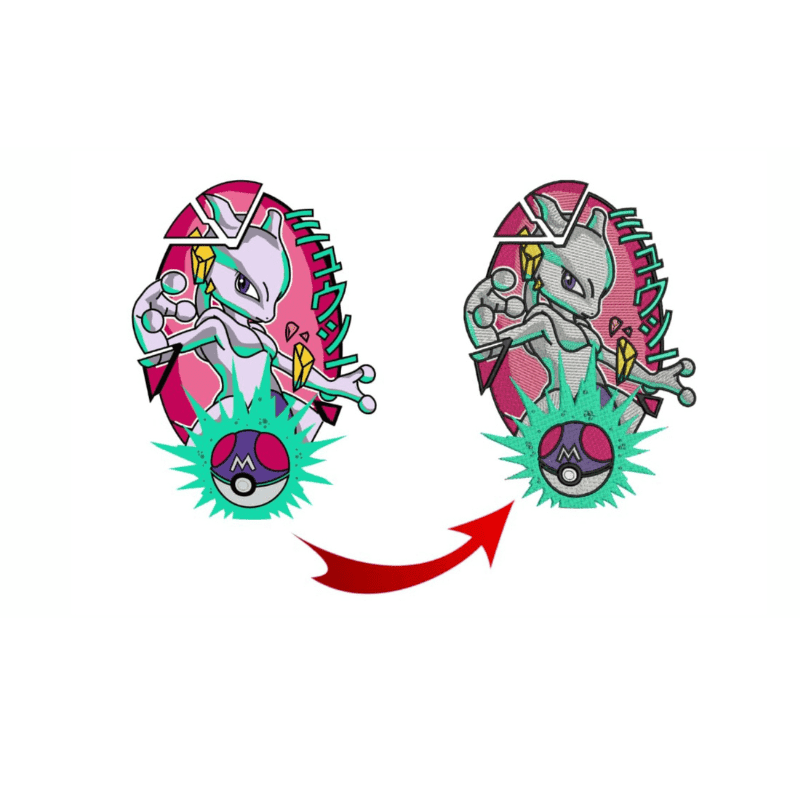Mastering the Needlework Digitizing Process: Your Ultimate Overview
Needlework digitizing is a meticulous craft that needs accuracy and proficiency to convert intricate designs into electronic layouts for machine embroidery. As artisans embark on this trip to understand the needlework digitizing process, an extensive understanding of the fundamentals establishes the structure for excellence.

Understanding Needlework Digitizing Essentials
Embroidery digitizing essentials develop the structure whereupon detailed designs are equated into machine-readable formats for exact sewing. This preliminary action in the embroidery digitizing procedure is essential for making sure that the last stitched item is a devoted depiction of the original style. Recognizing needlework digitizing essentials entails realizing vital principles such as stitch kinds, stitch direction, density, padding, and draw settlement.
Sew types play an important function in identifying the visual and textural outcome of the embroidered layout. By picking the ideal stitch kind, whether it be satin, fill, or running stitch, digitizers can accomplish the preferred impact and improve the general high quality of the needlework. Furthermore, sew instructions affects the circulation and measurement of the style, while thickness determines the spacing and coverage of the stitches.
Furthermore, underlay sewing supplies security to the style by securing the fabric and preventing distortion during the needlework process. Pull compensation is an additional essential consideration to counteract the all-natural tendency of fabric to agreement when stitched. Mastering these needlework digitizing fundamentals is fundamental for developing professional-quality embroidered items.
Choosing the Right Digitizing Software Application
Selecting the ideal digitizing software application is a vital choice that substantially affects the performance and quality of the needlework digitizing procedure. Digitizing for Embroidery. When selecting the right digitizing software program, it is necessary to think about variables such as the complexity of styles you intend to produce, the user-friendliness of the software, the level of client assistance offered, and the compatibility with your needlework equipment
There are different digitizing software program choices readily available on the market, ranging from standard programs for beginners to advanced software program for specialist digitizers. Some popular selections consist of Wilcom EmbroideryStudio, Hatch Embroidery Software Application, and PulseID. These software provide a variety of tools and features to help you produce detailed layouts easily.
Before making a choice, it is suggested to explore the different software options through free trials or demonstrations to figure out which one ideal fits your requirements. In addition, reviewing evaluations and looking for referrals from seasoned digitizers can provide valuable understandings right into the toughness and weak points of each software (Digitizing for Embroidery). By meticulously reviewing your demands and comparing the attributes of various digitizing software, you can make an enlightened option that improves your embroidery digitizing operations
Digitizing Tools and Techniques

Optimizing Layout Settings for Embroidery
Understanding the complexities of style setups is basic in accomplishing ideal outcomes in the embroidery digitizing process, structure upon the structure laid by comprehending digitizing devices and strategies. When optimizing design setups for embroidery, it is important to consider variables such as stitch type, density, padding, pull compensation, and enrollment. Stitch see page kind choice impacts the general look and feeling of the layout, with options like satin, fill, and running stitches providing various textures and effects. Density refers to the spacing and density of stitches, affecting the style's coverage and toughness. Proper padding sewing provides stability and avoids material distortion, especially for intricate designs or on elastic products. Draw settlement adjusts for fabric use this link stretch during stitching, ensuring accurate design replication. Registration settings line up different components of the layout properly, keeping general style integrity. By fine-tuning these design settings, embroiderers can enhance the top quality and precision of their stitched productions.

Troubleshooting Common Digitizing Issues
When experiencing common digitizing concerns throughout the needlework process, it is vital to understand the origin creates and implement efficient remedies quickly. One typical issue is stitch thickness problems, where stitches might be as well dense, creating the material to tighten, or too my review here sporadic, leading to voids in the layout. Readjusting the stitch thickness setups in the digitizing software can help solve this concern.
Another regular obstacle is thread breaks during the needlework procedure. This can occur due to different factors such as wrong tension settings, boring needles, or making use of low-grade thread. Guaranteeing correct upkeep of the needlework device, including routine needle adjustments and stress adjustments, can reduce the incident of string breaks.
Moreover, design registration errors can lead to misaligned components within the embroidery style. Inspecting the layout placement in the digitizing software and making required modifications prior to sewing can aid in preventing this issue. By dealing with these usual digitizing concerns promptly and successfully, you can ensure a smoother embroidery process and high-grade finished products.
Final Thought
To conclude, grasping the embroidery digitizing process needs a solid understanding of the basics, the ideal option of software application, and knowledge of devices and methods. Maximizing design settings and repairing usual digitizing concerns are critical action in making sure top notch embroidery results. By adhering to these actions vigilantly, one can achieve accuracy and effectiveness in the digitizing process.
Comments on “Trusted Digitizing for Embroidery: Relied On by Specialists”